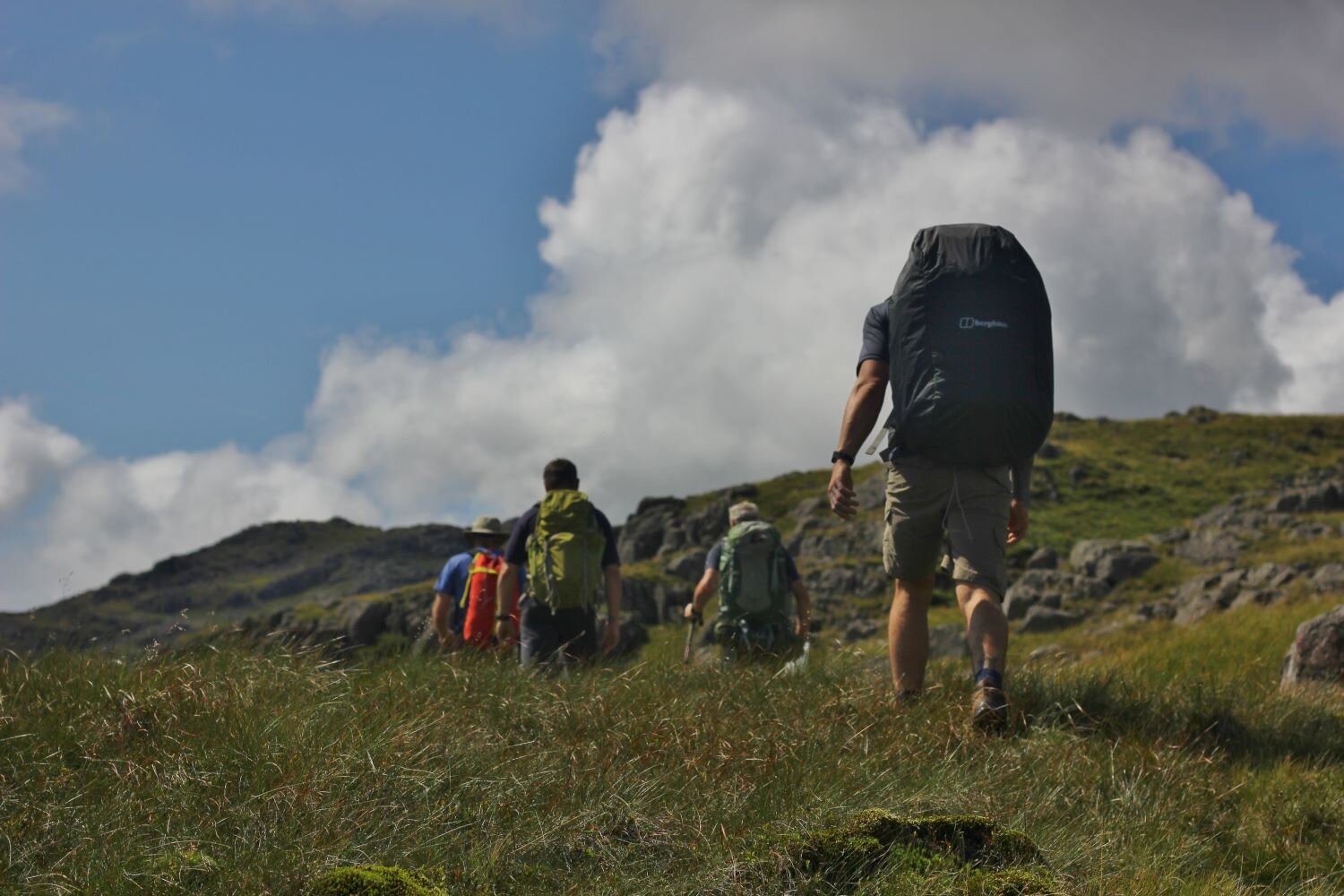The Conscious Competence Model and Learning New Movement Skills
/WRITTEN by CHRIS & ANNE ENSOLL
If you’re a regular reader of this blog, or you’ve been on one of our courses, you’ll know that movement coaching is one of my passions. I try to incorporate it in every mountain day that I do with clients, whatever the main focus of the day. So you might book a place on a Contour Masterclass, and you will definitely finish the day with lots of skills relating to contour interpretation, but you will also go away with all the basics about efficient movement. So why do I think it is so important?
PHOTO CREDIT: CLARE GIBSON
Walking for most people is an unconscious competence – we do it without any thought. It is almost as automatic as breathing, so why does it need to be taught? Can’t any able-bodied person walk without thinking about it? Well, yes, but moving effectively over uneven ground is far from automatic, particularly when there is any danger, real or perceived. Many walkers don’t understand what it is that helps them to move effectively, so when something goes wrong they don’t have the tools to sort out the problem.
Mark is a Level 3 mentee on our mentoring programme. He is a competent qualified Mountain Leader, with a lot of experience in the mountains. He recently came on our Movement Masterclass, where we spent quite a bit of time helping the participants to understand the strengths and weaknesses of their own and others’ movement on steep ground. It was great to see how Mark’s increased understanding of his own shortcomings led to significant improvements in efficiency. During a subsequent phone chat, he told me that he had been walking in the mountains with his regular walking partner, who is fitter and stronger than him. However, after having the movement coaching, he was able to keep up easily, and after being out for a few days he finished less tired that his fitter friend.
Mark went from not knowing that he had a problem, to accepting that he had a problem and needed to do something about it, to acquiring the skills he needed, and finally to being able to use his new skills without thinking about them. This is the process that we all go through when we learn a new skill, and it is the basis of the Conscious Competence learning model, which was developed in the late 1960s and into the 1970s. It describes the psychological stages involved in progressing from incompetence to competence.
Unconscious incompetence
I don’t know what I don’t know, so I need an external trigger to help me move up to the next level. I might be in denial and refuse to accept that I’m not good at a particular skill, and I might resist the external trigger. I might not admit the usefulness of the skill.
Conscious incompetence
I do know what I don’t know, which can be an uncomfortable feeling, but I’m aware of and accept the need for change or learning. I might compare myself unfavourably with someone who is more competent than me. I need to commit to the learning process and to have a clear idea of the benefits of making the effort. Support from a mentor or coach can be really useful at this stage
Conscious competence
I know that I need practice. I now have the knowledge and skills I need to improve but I still need to concentrate as the new skills aren’t yet automatic. I’m open to new ideas and willing to test them out.
Unconscious competence
I know what I know, and I can use my new skill without having to think about it, because it has become what I do automatically, or second nature. This is mastery. I’m ready to pass on the learning to others.
There are many other ways to express the four stages, including:
Don’t know, don’t care
Don’t know, do care
Do know, do care
Do know, don’t care
and
Discovery
Learning
Disciplined effort
Skilled application
PHOTO CREDIT: KELVYN JAMES
So why is efficient strong movement in the mountains important?
1 Safety
I think it is the most important thing skill for any mountaineer, even more important than navigation. If I get lost in the mountains of the UK, most of the time if I walk in one direction for an hour or ninety minutes, I will come to a road and I can sort myself out from there. However, if I my movement is poor, and I fall over and injure myself, I might know exactly where I am but I could still be in a lot of trouble. So being able to limit the amount of times I fall over is fundamental to safe mountaineering.
2 Enjoyment
Who doesn’t want to be able to do longer mountain days with less discomfort or pain? Walking through the mountains with minimum effort and finishing the day without too much discomfort is so much more fun than suffering all day and hobbling back to the car in lots of pain.
3 Passing it on
Once you’ve mastered a skill yourself, you can pass it on so that other people can be safer and have more enjoyment.
So what’s next?
There are several videos on our Video Tutorials page which will take you through the basics of movement coaching. If you want more in-depth coaching, join us on one of our Movement Masterclasses. We’re looking forward to hearing from you!






